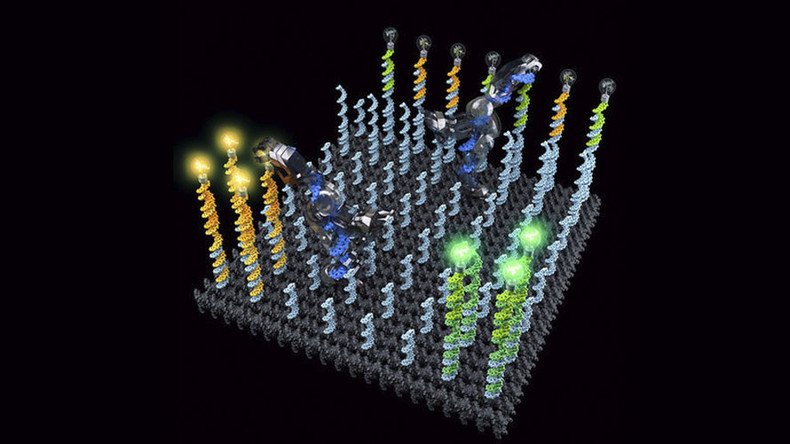Miniscule DNA robots could soon end need for major surgeries, researchers say

Robots made out of single strands of DNA could soon be used to precisely target and treat some of the world’s deadliest diseases.
Developed by researchers from the California Institute of Technology, the microscopic machines have feet, arms and hands included in their design so they can maneuver and pick up molecules. They then recognize specific drop-off points and respond to signals telling them when to drop their cargo.
“Just like electromechanical robots are sent off to faraway places, like Mars, we would like to send molecular robots to minuscule places where humans can't go, such as the bloodstream,” said Professor Lulu Qian, one of the leaders of the study.
Racist & sexist AI bots could deny you job, insurance & loans – tech experts https://t.co/aL23mWGu2Lpic.twitter.com/iv3nOhV7uf
— RT (@RT_com) August 26, 2017
During the study, published in the journal Science, the Caltech team cast six yellow and pink fluorescent molecules across a nano testing ground and watched as it took almost a day for the robot to identify and move them to different locations.
The researchers then conducted the same test using more DNA robots.
"The time decreased from roughly a day to roughly just a couple of hours," Professor Qian said.
"When there [was] more than one robot, the amount of cargo molecules that were actually correctly delivered to the desired locations increased to very close to 100 per cent."
DNA robots have been developed in the past, but the experiments represent the first time the machines have been shown to walk, sort and work together.
Tiny robots used to treat bacterial infections (VIDEO) https://t.co/32xnFec9ZJpic.twitter.com/IYM6jAJieC
— RT (@RT_com) August 17, 2017
Professor Wenlong Cheng of Monash University in Australia believes the work could be used to target specific areas of disease in the body, eradicating the need for traumatic surgery or radiotherapy.
"If someone gets a tumor, you can have small robotics, small robots walking to that location doing small scale surgery," Prof Cheng told ABC.
Meanwhile, Prof Qian believes the DNA robots has all manner of potential applications, saying it could even one day be used as a tool to identify recyclable molecules in garbage.
“It is my hope that other researchers could use these principles for exciting applications, such as using a DNA robot for synthesizing a therapeutic chemical in an artificial molecular factory, delivering a drug only when a specific signal is given in bloodstreams or cells, or sorting molecular components in trash for recycling.”












